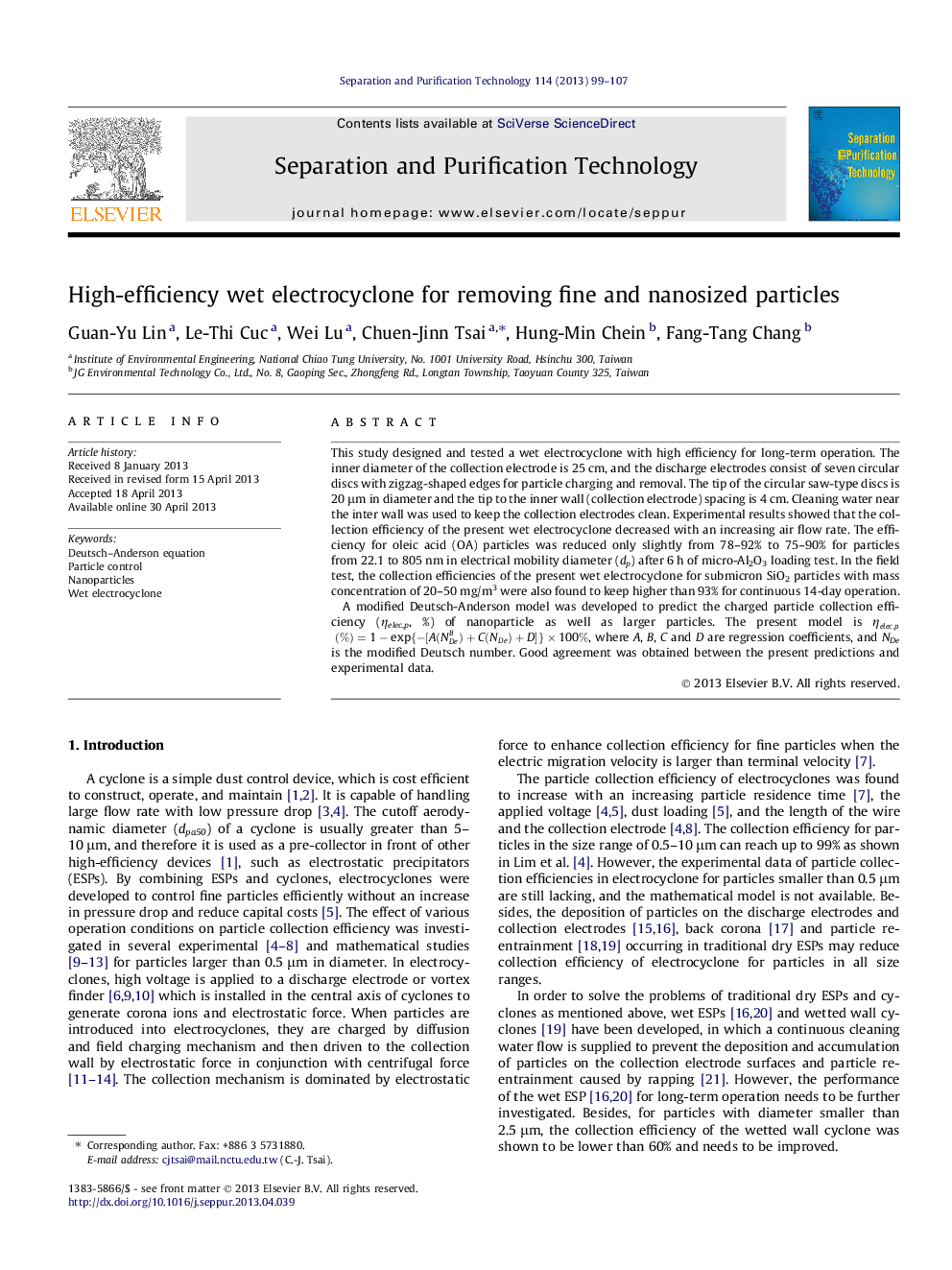| Article ID | Journal | Published Year | Pages | File Type |
|---|---|---|---|---|
| 641468 | Separation and Purification Technology | 2013 | 9 Pages |
•A wet electrocyclone with high efficiency was designed and tested.•The present wet electrocyclone is able to enhance nanoparticle collection efficiency.•Cleaning water and water mist are able to maintain high efficiency.•Good agreement between the present predictions and experimental data was obtained.•The present model can be used to facilitate the design of the wet electrocyclone.
This study designed and tested a wet electrocyclone with high efficiency for long-term operation. The inner diameter of the collection electrode is 25 cm, and the discharge electrodes consist of seven circular discs with zigzag-shaped edges for particle charging and removal. The tip of the circular saw-type discs is 20 μm in diameter and the tip to the inner wall (collection electrode) spacing is 4 cm. Cleaning water near the inter wall was used to keep the collection electrodes clean. Experimental results showed that the collection efficiency of the present wet electrocyclone decreased with an increasing air flow rate. The efficiency for oleic acid (OA) particles was reduced only slightly from 78–92% to 75–90% for particles from 22.1 to 805 nm in electrical mobility diameter (dp) after 6 h of micro-Al2O3 loading test. In the field test, the collection efficiencies of the present wet electrocyclone for submicron SiO2 particles with mass concentration of 20–50 mg/m3 were also found to keep higher than 93% for continuous 14-day operation.A modified Deutsch-Anderson model was developed to predict the charged particle collection efficiency (ηelec,p , %) of nanoparticle as well as larger particles. The present model is ηelec,p(%)=1-exp{-[A(NDeB)+C(NDe)+D]}×100%, where A, B, C and D are regression coefficients, and NDe is the modified Deutsch number. Good agreement was obtained between the present predictions and experimental data.
